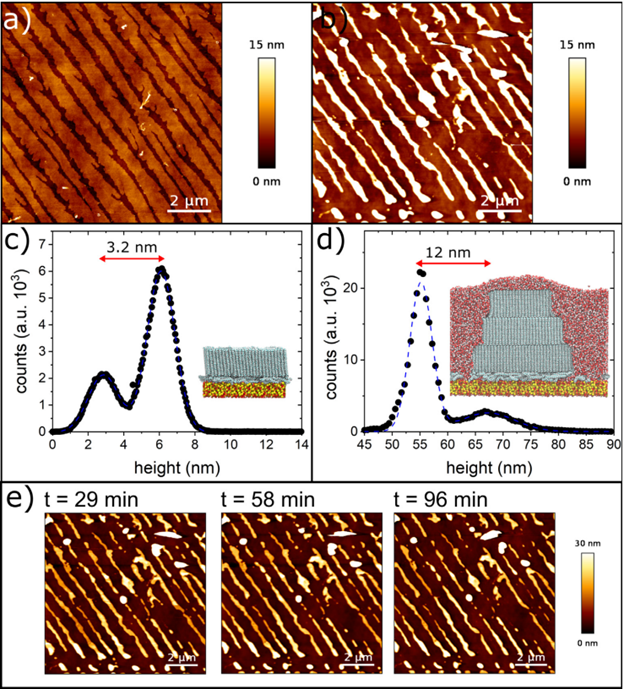Paper summary
Weakly bound, physisorbed hydrocarbons could in principle provide a similar waterrepellency as obtained by chemisorption of strongly bound hydrophobic molecules at surfaces.
Experiments: Here we present experiments and computer simulations on the wetting behaviour of water on molecularly thin, self-assembled alkane carpets of dotriacontane (n-C32H66 or C32) physisorbed on the hydrophilic native oxide layer of silicon surfaces during dip-coating from a binary alkane solution.
By changing the dip-coating velocity we control the initial C32 surface coverage and achieve distinct film morphologies, encompassing homogeneous coatings with self-organised nanopatterns that range from dendritic nano-islands to stripes. We found out that both the coverage and morphology of the nanopatterns can be controlled by the sample preparation velocity.
we find a coating transition at 0.83 mm/s between two types of organic growth structure, which is reflected in both the surface coverage as well as the fractal dimension of the resulting nanopatterns. The transition between the two coating regimes affects the wetting properties of water, the measured contact angles also group into two regimes.
Journal : Journal of Colloids and Interface Science
Publiosh Date : 26 July 2021
Paper link



